- Clone
- 10.1 (See other available formats)
- Regulatory Status
- RUO
- Workshop
- VI MA36
- Other Names
- FcγRI, FcR I
- Isotype
- Mouse IgG1, κ
- Barcode Sequence
- AAGTATGCCCTACGA
- Ave. Rating
- Submit a Review
| Cat # | Size | Price | Quantity Check Availability | Save | ||
|---|---|---|---|---|---|---|
| 305051 | 10 µg | $369 | ||||
CD64 is a 72 kD single chain type I glycoprotein also known as FcγRI and FcR I. CD64 is a member of the immunoglobulin superfamily and is expressed on monocytes/macrophages, dendritic cells, and activated granulocytes. The expression can be upregulated by IFN-γ stimulation. CD64 binds IgG immune complex. It plays a role in antigen capture, phagocytosis of IgG/antigen complexes, and antibody-dependent cellular cytotoxicity (ADCC).
Product DetailsProduct Details
- Verified Reactivity
- Human, Cynomolgus, Rhesus
- Reported Reactivity
- Baboon, Capuchin Monkey, Chimpanzee, Squirrel Monkey
- Antibody Type
- Monoclonal
- Host Species
- Mouse
- Immunogen
- Human rheumatoid synovial fluid cells and fibronectin-purified monocytes.
- Formulation
- Phosphate-buffered solution, pH 7.2, containing 0.09% sodium azide and EDTA
- Preparation
- The antibody was purified by chromatography and conjugated with TotalSeq™-D oligomer under optimal conditions.
- Concentration
- 0.5 mg/mL
- Storage & Handling
- The antibody solution should be stored undiluted between 2°C and 8°C. Do not freeze.
- Application
-
PG - Quality tested
- Recommended Usage
-
Each lot of this antibody is quality control tested by immunofluorescent staining with flow cytometric analysis and the oligomer sequence is confirmed by sequencing. TotalSeq™-D antibodies are compatible with Mission Bio’s Tapestri Single-Cell Sequencing Platform for simultaneous detection of DNA and Protein.
To maximize performance, it is strongly recommended that the reagent be titrated for each application, and that you centrifuge the antibody dilution before adding to the cells at 14,000xg at 2 - 8°C for 10 minutes. Carefully pipette out the liquid avoiding the bottom of the tube and add to the cell suspension. For Proteogenomics analysis, the suggested starting amount of this reagent for titration is ≤ 1.0 µg per million cells in 100 µL volume. Refer to the corresponding TotalSeq™ protocol for specific staining instructions.
Buyer is solely responsible for determining whether Buyer has all intellectual property rights that are necessary for Buyer's intended uses of the BioLegend TotalSeq™ products. For example, for any technology platform Buyer uses with TotalSeq™, it is Buyer's sole responsibility to determine whether it has all necessary third party intellectual property rights to use that platform and TotalSeq™ with that platform. - Application Notes
-
Clone 10.1 recognizes the EC3 epitope of CD64. While both contain the EC3 domain, in-house testing suggests that clone 10.1 preferentially binds to CD64A (FcγRIA), but not CD64B (FcγRIB). Additional reported applications (for the relevant formats) include: blocking of human IgG3 and murine IgG2a binding to FcγRI2,5,6,11 and immunohistochemical staining of acetone-fixed frozen tissue sections12.
- Additional Product Notes
-
TotalSeq™-D reagents are designed to profile protein expression at single cell level. The Mission Bio Tapestri platform and sequencer (e.g. Illumina analyzers) are required. Please contact technical support for more information, or visit biolegend.com/totalseq/single-cell-dna
The barcode flanking sequences are CGAGATGACTACGCTACTCATGG (PCR handle), and GAGCCGATCTAGTATCTCAGT*C*G (capture sequence). * indicates a phosphorothioated bond, to prevent nuclease degradation.
View more applications data for this product in our Application Technical Notes. -
Application References
(PubMed link indicates BioLegend citation) -
- McMichael A, et al. Eds. 1987. Leucocyte Typing III. Oxford University Press. New York.
- Schlossman S, et al. Eds. 1995. Leucocyte Typing V. Oxford University Press. New York. p. 874.
- Kishimoto T, et al. Eds. 1997. Leucocyte Typing VI. Garland Publishing Inc. London.
- Holl V, et al. 2004. J. Immunol. 173:6274.
- Hober D, et al. 2002. J. Gen. Virol. 83:2169.
- Cho HJ, et al. 2007. Physiol Genomics 149:60.
- van Tits L, et al. 2005. Arterioscler Thromb Vasc Biol. 25:717. PubMed
- Bruhns P, et al. 2008. Blood 113:3716. PubMed
- Yoshino N, et al. 2000. Exp. Anim. (Tokyo) 49:97. (FC)
- Carter DL, et al. 1999. Cytometry 37:41. (FC)
- Dougherty GJ, et al. 1987. Eur. J. Immunol. 17:1453.
- Blom AB, et al. 2003. Arthritis Rheum. 48(4):1002-14. (IHC)
- RRID
-
AB_2892360 (BioLegend Cat. No. 305051)
Antigen Details
- Structure
- Ig superfamily, type I glycoprotein, 72 kD
- Distribution
-
Monocytes, macrophages, dendritic cells, activated granulocytes
- Function
- Phagocytosis, ADCC
- Ligand/Receptor
- IgG receptor
- Cell Type
- Dendritic cells, Granulocytes, Macrophages, Monocytes
- Biology Area
- Immunology, Innate Immunity
- Molecular Family
- CD Molecules, Fc Receptors
- Antigen References
-
1. Hulett M, et al. 1994. Adv. Immunol. 57:1.
2. van de Winkel J, et al. 1993. Immunol. Today 14:215. - Gene ID
- 2209 View all products for this Gene ID
- UniProt
- View information about CD64 on UniProt.org
Related Pages & Pathways
Pages
Related FAQs
- Is our human Trustain FcX™ (cat# 422302) compatible with anti human CD16, CD32 and CD64 clones 3G8, FUN-2 and 10.1 respectively?
-
Yes
Other Formats
View All CD64 Reagents Request Custom ConjugationCompare Data Across All Formats
This data display is provided for general comparisons between formats.
Your actual data may vary due to variations in samples, target cells, instruments and their settings, staining conditions, and other factors.
If you need assistance with selecting the best format contact our expert technical support team.
-
Biotin anti-human CD64
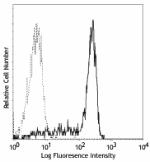
Human peripheral blood monocytes stained with 10.1 FITC -
FITC anti-human CD64

Human peripheral blood monocytes stained with 10.1 FITC -
PE anti-human CD64
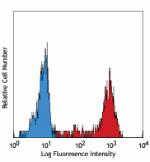
Human peripheral blood monocytes stained with 10.1 PE -
Purified anti-human CD64

Human peripheral blood monocytes were stained with CD64 (clo... -
Alexa Fluor® 488 anti-human CD64
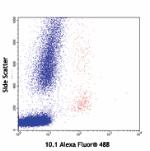
Human peripheral blood lymphocytes, monocytes, and granulocy... -
Alexa Fluor® 647 anti-human CD64

Human peripheral blood monocytes stained with10.1 Alexa Fluo... -
APC anti-human CD64
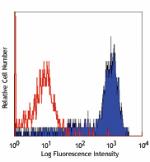
Human peripheral blood monocytes stained with 10.1 APC -
Pacific Blue™ anti-human CD64
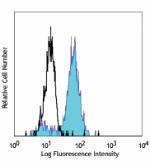
Human peripheral blood monocytes stained with 10.1 Pacific B... -
Brilliant Violet 421™ anti-human CD64
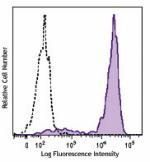
Human peripheral blood monocytes were stained with CD64 (clo... -
PE/Cyanine7 anti-human CD64
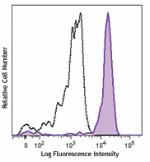
Human peripheral blood monocytes stained with anti-human CD6... -
PerCP/Cyanine5.5 anti-human CD64
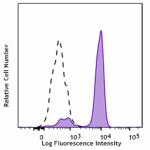
Human peripheral blood monocytes stained with CD64 (clone 10... -
APC/Cyanine7 anti-human CD64
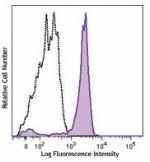
Human peripheral blood monocytes stained with anti-human CD6... -
Brilliant Violet 510™ anti-human CD64
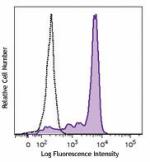
Human peripheral blood monocytes were stained with anti-huma... -
Purified anti-human CD64 (Maxpar® Ready)
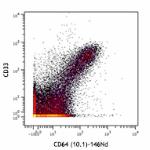
Human PBMCs stained with 158Gd-anti-CD33 (WM53) and 146Nd-an... -
PE/Dazzle™ 594 anti-human CD64
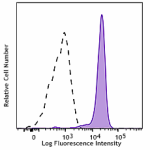
Human peripheral blood monocytes were stained with CD64 (clo... -
Brilliant Violet 605™ anti-human CD64
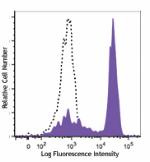
Human peripheral blood monocytes were stained with CD64 (clo... -
APC/Fire™ 750 anti-human CD64
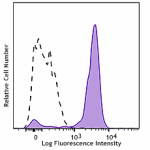
Human peripheral blood monocytes were stained with anti-huma... -
PE anti-human CD64

Typical results from human peripheral blood monocytes staine... -
PE/Dazzle™ 594 anti-human CD64

Typical results from human peripheral blood monocytes staine... -
FITC anti-human CD64

Typical results from human peripheral blood monocytes staine... -
TotalSeq™-A0162 anti-human CD64
-
Brilliant Violet 711™ anti-human CD64
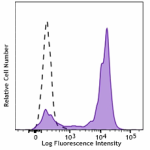
Human peripheral blood monocytes were stained with CD64 (clo... -
Alexa Fluor® 700 anti-human CD64
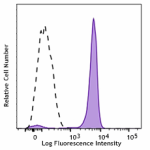
Human peripheral blood monocytes were stained with CD64 (Clo... -
Brilliant Violet 785™ anti-human CD64

Human peripheral blood monocytes were stained with CD64 (clo... -
TotalSeq™-C0162 anti-human CD64
-
Ultra-LEAF™ Purified anti-human CD64

Human peripheral blood monocytes were stained with CD64 (clo... -
TotalSeq™-B0162 anti-human CD64
-
TotalSeq™-D0162 anti-human CD64
-
GMP PE anti-human CD64
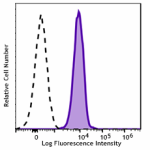
Typical results from human peripheral blood monocytes staine... -
GMP FITC anti-human CD64
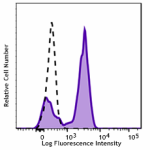
Typical results from human peripheral blood monocytes staine... -
Brilliant Violet 650™ anti-human CD64
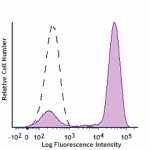
Human peripheral blood monocytes were stained with anti-huma... -
GMP PE/Dazzle™ 594 anti-human CD64

Typical results from human peripheral blood monocytes staine... -
PE/Cyanine7 anti-human CD64
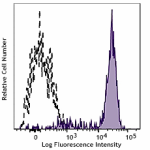
Typical result from human peripheral monocytes stained eithe... -
APC/Fire™ 750 anti-human CD64
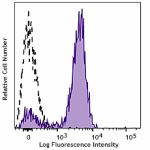
Typical results from human peripheral blood monocytes staine... -
PerCP/Cyanine5.5 anti-human CD64
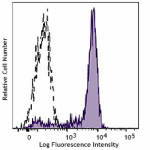
Typical result from human peripheral blood monocytes stained... -
Pacific Blue™ anti-human CD64

Typical result from human peripheral blood monocytes stained... -
GMP APC/Fire™ 750 anti-human CD64

Typical results from human peripheral blood monocytes staine... -
GMP PE/Cyanine7 anti-human CD64

Typical results from human peripheral blood monocytes staine...

 Login/Register
Login/Register 













Follow Us